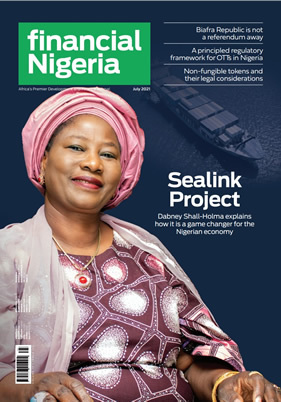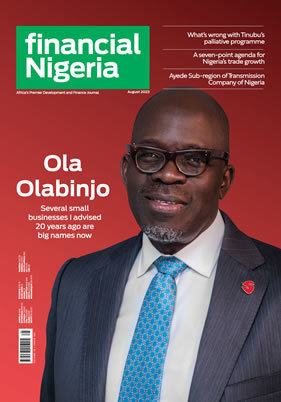
Mojisola Karigidi, Founder and Product Developer, Moepelorse Bio Resources
Follow Mojisola Karigidi
![]() @OjebodeMojisola
@OjebodeMojisola
Subjects of Interest
- Food Security
- Governance
- Health
- Sustainable Development
AI solutions for improved crop production 08 Sep 2025
The global population reached 8 billion in 2022 and is expected to surpass the 10 billion mark by 2050, according to the United Nations Department of Economics and Social Affairs. In a 2025 report by the Food and Agriculture Organisation of the United Nations (FAO) on the state of food security and nutrition in the world, there has been marginal reductions in hunger from 8.7 percent of global population in 2022, to 8.5 percent in 2023 and 8.2 percent in 2024.
However, beyond hunger, up to 2.3 billion people suffered moderate or severe food insecurity in 2024. The report highlighted that food insecurity is on the rise in Africa, falling in Latin America and the Caribbean and has been declining gradually in some parts of Asia for some years. Oceania, Northern America, and Europe also experienced a decline between 2023 and 2024.
Armed conflicts and war, climate change, economic instability and shocks, inflation in food prices, and inefficient food systems are responsible for the setbacks. Other factors include limited access to land, lack of political will, and inadequate investment in sustainable farming and technology. To eradicate food insecurity or be close to doing so, against the backdrop of a growing world population, we must find ways to sustainably use limited resources to grow more food and ethically apply technology to achieve desired results.
One technology that could be applied to drastically improve crop production is artificial intelligence (AI). IBM defines AI as technology that enables computers and machines to simulate human learning, comprehension, problem solving, decision making, creativity, and autonomy. AI relies on human intelligence and availability of vast data to provide improved outcomes, which can be harnessed to improve crop production.
Many of the available AI-powered solutions for crop production make use of robots and drones. However, there are a good number of such solutions that do not require these specific tools. In this article, I will discuss how AI innovations can be employed by farmers in Africa and other developing parts of the world to significantly improve efficiency, yield, and overall crop output.
AI can provide predictive analytics to help farmers forecast yield. When farmers are able to tell ahead of time precise harvesting time and how much yield to expect, they will be able to make proactive decisions about how to allocate resources. Several AI platforms are currently available for farmers across Africa for harvest prediction. One of such platforms is iSDA-Africa’s Virtual Agronomist, an advisory tool that draws on latest advances across several fields including decision science, integrated agronomic management, remote sensing, field sensors, and weather services. It delivers personalised farming guidance through WhatsApp using existing knowledge. Amongst others, it provides personalised information on fertiliser application, pest control, planting time, and soil health and has been used by over 250,000 farmers across Africa since March 2024.
The platform works for up to 17 crops, including cassava, common bean, cowpea, groundnut, millet, sugarcane, Irish potatoes, barley, coffee, sesame, soybean, rice, sorghum, sunflower, green gram, cotton, and maize. iSDA was founded by three research institutes: Rothamsted Research, the World Agroforestry Centre (ICRAF), and the International Institute of Tropical Agriculture (IITA). Farmers have reported double fold yield improvements and saved costs.
Other platforms that provide similar services to farmers are Darli (WhatsApp-based), Ulangizi (Malawi), PlantVillage and Virtual Agronomist (Kenya), CropSense (across Africa), Aerobotics (South Africa), Agrix Tech (Cameroon), SyeComp (Ghana and Kenya), AgriPredict (Zambia + pan Africa), MazaoHub (Tanzania), and Amini (Kenya).
For the enhancement of soil health and nutrient, AI algorithms have also been developed to analyse soil test results and environmental data to recommend customised fertilisation by stating required fertiliser composition and application schedules. This innovation prevents fertiliser overuse and waste, and improves soil and crop health. One example of AI powered mobile application for fertiliser optimisation and soil nutrient prediction is GeaGrow, which is available in Southwest Nigeria. This app predicts soil nutrients levels of nitrogen, phosphorus, potassium as well as pH for yam, cassava, maize, and rice. It relies on soil analysis and expert agronomic data, supports spatial mapping, and includes reminder features and localisation in Yoruba language.
Also, Farmonaunt – a satellite and sensor-based application – delivers real-time soil health insights, fertiliser recommendations, and integrated crop monitoring. It is available in several countries and regions, including India, Australia, New Zealand, Germany, Uzbekistan, Egypt, Nigeria, and Central Africa. However, features of the application may vary depending on regulations in different countries. Other platforms, such as CropX and Adapt-N, combine AI with soil sensors to monitor nutrients and moisture levels to suggest fertilisation and irrigation strategies.
AI has also been deployed for seed selection and breeding to increase crop resilience and yield for farmers under prevailing local conditions. One of such digital seed variety platforms is AGRA’s Africa Digital Crop Variety Catalogue, which is an interactive online database developed with national agricultural research systems and ministries. This platform provides searchable and current information on officially released crop varieties across six countries in Africa: Ethiopia, Malawi, Nigeria, Rwanda, Tanzania, and Uganda. It provides database to enable farmers, researchers, and seed companies make up-to-date informed decisions.
Another AI-powered platform for breeding and variety selection is ONA/Bruno, developed by the Alliance CAIT and ONA mobile app and its robotics partner, Bruno, to provide digital phenotyping, which enables crop breeders to scan and evaluate plant traits in field accurately. This innovation accelerates breeding cycles for the selection of high performing crop varieties. Other platforms like Apollo Agriculture (Kenya) uses machine learning to assess farmers’ creditworthiness and provide quality seeds, fertiliser, and inputs on credit. Fair Planet seeks to ‘revolutionise’ food production while Solynta offers hybrid potato seed varieties.
Rapid detection of diseases and pests through imaging and AI-powered applications will help farmers detect and identify crop diseases and pests early enough to take immediate action for control. The mobile applications use images uploaded by farmers to determine the particular crop disease or pest. For example, PlantVillage Nuru application scans photographs of leaves taken by farmers or extension workers to detect disease affected areas and provides accurate diagnosis. It advises the use of AI to recognise disease symptoms. This application is available across East and West Africa.
Another app that detects diseases is Tumaini. It is a smartphone application that analyses photographs of banana leaves, fruits, bunches, etc. to diagnose six banana diseases using image-recognition AI. After successful detection, it offers localised recommendation. The app has been tested in the Democratic Republic of Congo and Uganda. Other AI-powered disease and pest detectors include Agrix Tech (Cameroon), Selina Wamucii’s Kuzi tool (across Africa), and MkulimaGPT (Tanzania).
AI systems can also integrate weather forecasts, soil moisture data, and crop type to automate irrigation schedules for smart irrigation. This optimises water usage, ensures crops get the right quantity of water per time, boosts crop yield, and supports climate resilience. These innovations are very beneficial for smallholder farmers in situations of water scarcity, erratic rainfall, and limited irrigation interventions. An example is SunCulture, a solar-powered irrigation system controlled by a mobile app. It is designed for smallholder farmers across East Africa and has demonstrated as much as 70 percent reduction in manual labour and increased crop yield by up to three folds.
Other platforms for scalable smart irrigation include SaharaSprout (across Africa), Manna Irrigation Intelligence (Egypt), CropX (South Africa), Synnefa (Kenya), Ulangizi (Malawi), and KijaniSpace (PAn-Africa).
In order to help farmers maximise profits and reduce post-harvest losses, a number of AI-powered platforms have been developed to forecast market demand and price trends, supporting farmers to decide when and where to sell their farm produces. In Nigeria, there is Foodlocker, a solution that explicitly forecasts demand using deep learning to analyse historical demand data across various commodities. This platform enables farmers to determine what quantities to produce, when to produce them, along with off-taker guarantees to help farmers make precise decisions. Similar solutions are AgroCenta (Ghana), Twiga Foods (Kenya), Selina Wamucii (Pan-Africa, based in Kenya), and WeFarm (across Africa).
Now that these innovations are available, there must be concerted efforts from all stakeholders to support the acquisition of smartphones and the availability of reliable communication and internet connections in remote farming communities across Africa and other developing nations globally to help rural small-scale farmers utilise these innovations. By applying AI technology, we can produce more food crops with limited resources, minimise losses, thrive in prevailing climatic conditions, boost farmers income, and progressively set Africa and the developing world on the path to becoming food secure.
Mojisola Karigidi, PhD, a Financial Nigeria Columnist, is a Nigerian biochemist and the founder and product developer at Moepelorse Bio Resources. She is also a Global Innovation Through Science and Technology (GIST) awardee, and an Aspen New Voices fellow.
Latest Blogs By Mojisola Karigidi
- AI solutions for improved poultry and fish production
- AI solutions for improved crop production
- Threats and mitigation strategies against plastic waste in agriculture
- Implementation strategy crucial for the success of 12-4 education policy
- TELA Maize and addressing the concerns over GM foods



